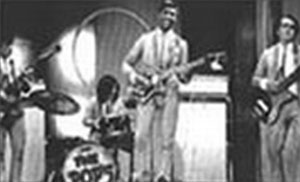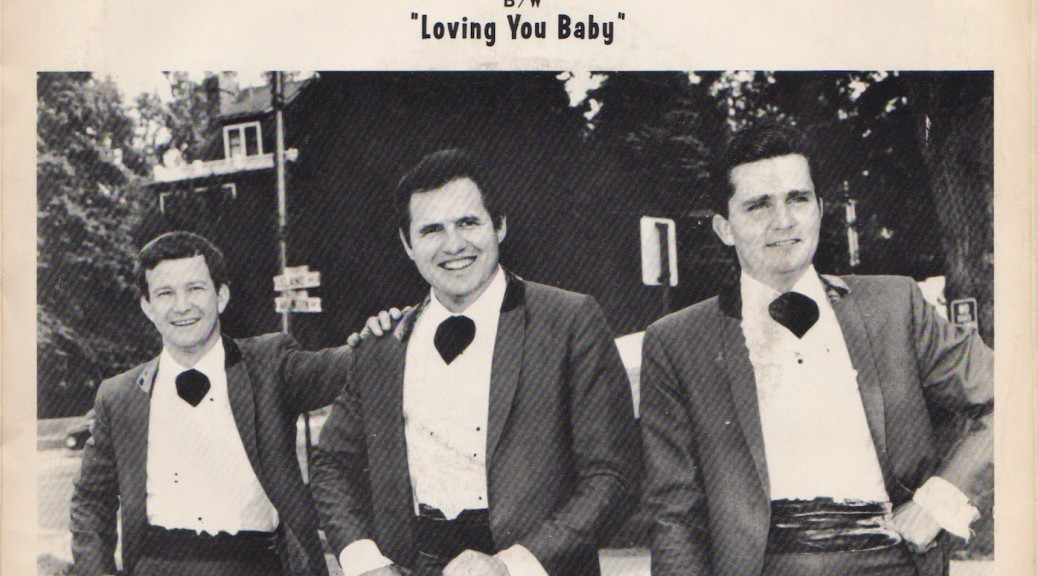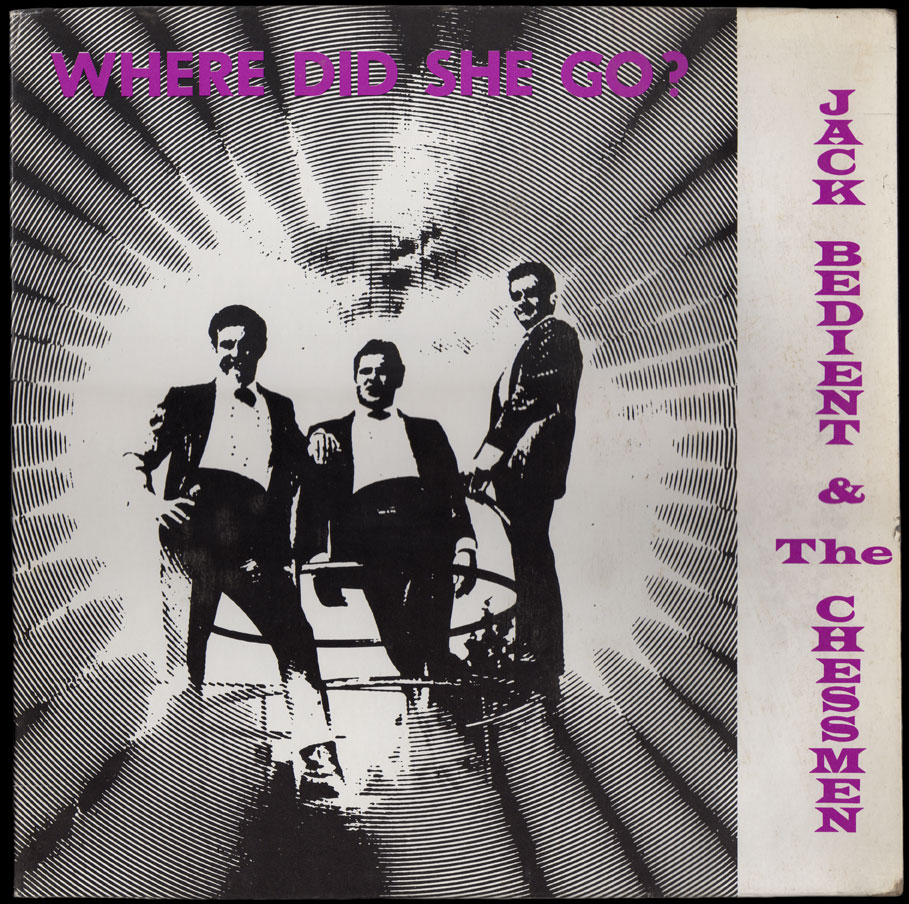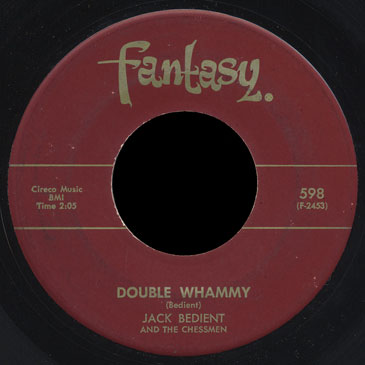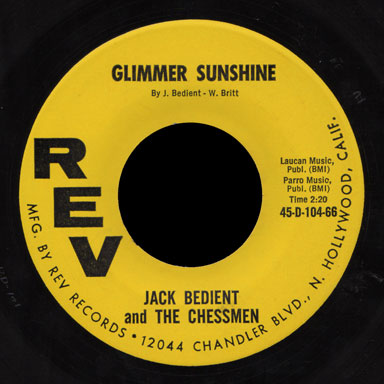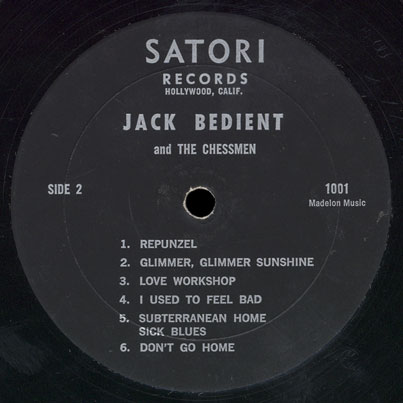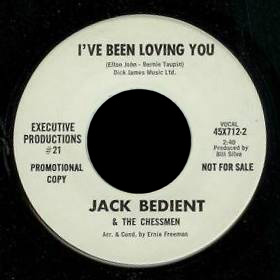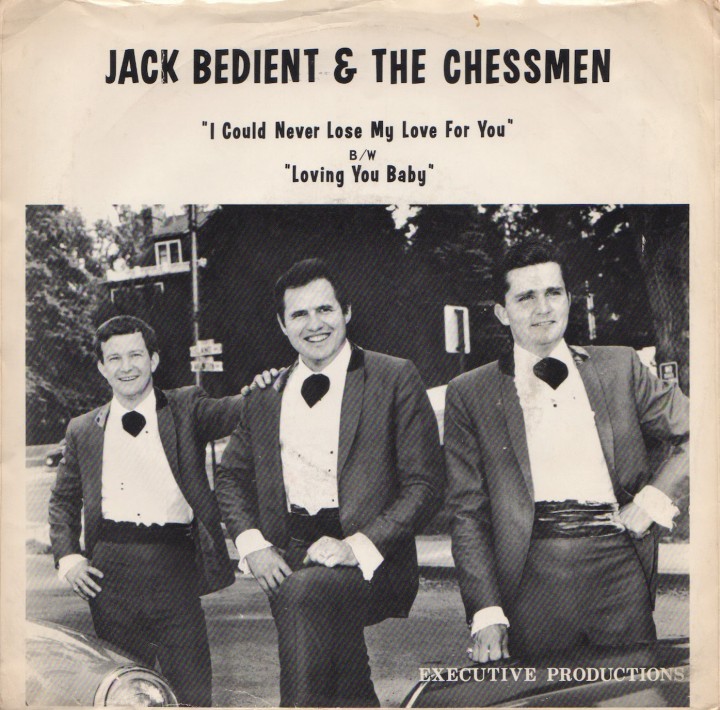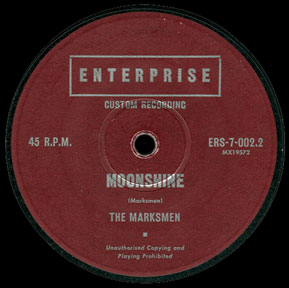The Marksmen were a surf band from the town of Wollongong near Sydney, not to be confused with the instrumental group from Melbourne called the Marksmen who released singles on the W & G label in the early ’60s.
Original members were Neil Porter bass, Dan Coutts lead guitar, Lyle McLean guitar and Dave Kirkup on drums. Tony Markham replaced Kirkup, and needing a singer for variety in their live shows, they found first Brian Davitt and later Bobby Kerr of the Chevrons.
“The Marksmen were a surf band from the town of Wollongong near Sydney…”
Neil Porter: I’m fascinated by this because it is not generally known or recognised, but this is the raw basic truth. Deep in my heart, the only real Marksmen were our original surfing instrumental band. All the bands in those days were instrumental bands and, being part of the British Commonwealth, Aussie bands were seriously influenced by The Shadows. They never quite had their deserved success in the USA, although they were huge in Europe, Africa and other places. We had the best of all worlds out here because we also got all the American stuff such as Ventures, Duane Eddy, and so on. For most bands, a singer was a token add-on, somewhat forced onto the band because “You’ve got to have a singer”. We certainly played most of our gigs without one for the first two years. Some places would not book you unless you had a singer, but the singers were generally underworked while the band played instrumentals for most of the night.
The band was originally called “The Tremors”. We were quite influenced by Johnny and the Hurricanes and, even though we had no sax or organ, we adapted many of their tracks to just 2 guitars, bass and drums. Well, initially just 3 guitars! Dan Coutts was a composer of originals from the word go, and was especially creative with instrumentals. He composed a piece called “Tremor” as well another one called “Earthquake”. Check out the names of many of the Hurricanes tracks and you will see why. We decided to call ourselves “The Tremors” after Dan’s tune. We commenced in late 1961 with Dan, myself and Lyle McLean. We managed to obtain a great drummer in Dave Kirkup early in 1962. We practised like it was going out of style and played a few gigs, mostly freebies – weddings, parties, anything – the usual kick-off gigs for new, young bands.
We had initially knocked the doors of all the guys we knew who remotely seemed as though they might be able to sing, but none were interested, and we were more than happy just to play guitar instrumentals. About half-way through 1962 we were able to get a great singer with a great stage charisma, Brian Davitt, and we worked out the year with him, working every week as the resident band at a local dance. This was pretty good, really, as, when we first started, we could hardly play!
Surfing music started to get heaps of Aussie airplay in 1962, initially with the Beach Boys “Surfin’ Safari” but, more importantly for that era, the Chantays with “Pipeline” followed sometime later with “Wipeout” by the Surfaris. And then the Aussie band the Atlantics came out with “Moonman”, later followed by their international #1 hit with “Bombora”. And we were still stuck in the old scene! Overnight, in one fell swoop we adapted many of our already-pounding repertoire into surf tracks and went for a name change. By this time Brian Davitt had an uncomfortable TV appearance and disappeared on us, so we were left alone as a 4-piece instrumental group.
Q. When did the Tremors change their name to the Marksmen?
The Tremors became the Marksmen in about February 1963. A specific memory-trigger reminds me that the name-change came at the end of summer which, in Australia, finishes in February. The latest would have been March. We didn’t work much through the year as Lyle was finishing his last year at school. When school and Uni exams were over in October/November we were raring to go and we did, all though the summer of ’63-”64 – as the Marksmen, a 4-piece surfing instrumental band. And we were likely the first band in Wollongong to sing Beatles songs live, getting on the bandwagon very early. We had always given Brian Davitt vocal backing and harmonies right from the start, and loved the Beatles, as everyone did. So, even without another singer, we sang ourselves. Initially, this was Dan, Dave and myself, although Lyle took a much larger vocal role very soon after.
Nevertheless, in spite of the ‘groups’ scene that emerged from England and swamped the world, the culture still demanded that, “You’ve got to have a singer” so we advertised for one and got Bob. The earliest this could have been would have been February 1964, but it may have even been as late as March or April. Prior to that Bob had been the lead singer of the Chevrons, mates of ours, and we had not been aware that he had left them. This, then, is more than a year after the Marksmen were named.
Dan Coutts was the original lead guitarist until Lyle hit full throttle, then rhythm guitarist, prolific composer, and great singer. Dan and I did most of the vocal harmonies no matter who else was singing lead, as well as taking the lead on many songs as well. Dan and I spent many 100s of hours together practising harmonies and often did duets together, such as those sung by John Lennon and Paul McCartney, especially those songs from several of their earlier albums.
Lyle was lead guitar and, although he doesn’t really know it or understand it, he became a legend in his own time, even to local young ’80s guitarists who never even met him or heard him play.
Lyle’s best friend, Frank Jones, was, on two different occasions, going to be our sax player, but it didn’t eventuate. Nevertheless, he still hung around from to time and, yes, he was at the meeting we held to find a new band name, probably January or February of 1963. It was Frank who was fiddling with a box of Marksmen slugs and suggested the name. I hated it from the start, but Lyle, and I suspect he felt a bit guilty about being in the band while his best mate wasn’t, strongly supported Frank’s name choice and eventually persuaded us to go with it. But not Bob, who didn’t come into the band until over a year later!
Q. Your 45 on Enterprise was self-financed?
This is certainly true. They call them indie releases nowadays, but we didn’t call them anything back then!
Q. The 45 seems to have been popular, but it is very rare now.
Just last Saturday, someone was advertising in a our major Sydney newspaper for a copy of “But Why/Moonshine”. Well, I never!
Q. How many copies were pressed, and how were they distributed – at shows or in shops?
We had no proper distribution and had only 500 copies produced, which we paid for entirely ourselves. Our manager of that time, Larry Lawrence, was completely in charge of this, so I know little of the details. We did a big mailout to all the major radio stations in every state, and this took up a significant number of the copies.
As far as I know they did sell as many as we put into their stores but in spite of our local popularity, we didn’t even chart in our own home town.
Q. So You didn’t sell 10,000 copies?
If we had sold 10,000 copies of “But Why/Moonshine” in the mid-’60s, we would have had, because of the very small population of Australia, quite a huge national hit. This certainly did not happen. In those days, 10,000 sales would have made us local heroes.
Q. It’s truly one of the best…
It is most humbling to find out this also appears to be quite true, as far as ’60s garage fans are concerned. Thanks for the compliment.
Believe it or not, 4ZZZ in Brisbane, Queensland played “Moonshine’ just last week. Apparently they have a regular ’60s nostalgia session. My older married daughter, who lives in Brisbane, heard it while driving home from work, and rang me straight away. “That was my Dad!” she went and told everyone she could! I have no idea what happened to any leftovers, so we must presume they no longer exist. I must confess that I have been astonished at this very belated interest in the record, even as far away as the USA and Denmark, let alone other states in Australia. It’s all a mystery to me! Makes me think that I didn’t entirely waste my youth after all!
Q. Did you write any other original material besides “But Why”?
I always did, as did Dan Coutts. Lyle wrote several songs as well. Bob wrote a few. There were a number of problems. The whole Australian music scene was geared to making money out of cloning USA hits and some British ones. There was always the odd group or singer who broke the mold and recorded original material but, in those days, it was hard to do that. We always included originals in our live sets but we mainly played top-40 covers as did everyone else. Probably our major problem was that ‘they’ were ‘there’ and we were ‘here’. ‘There’ was Sydney or Melbourne and ‘they’ were the bands that lived there and were not always any better than we were, and often not as good. “Here’ was Wollongong, miles away from the big smoke where ‘it’ was always happening, somewhat isolated, and always a little bit behind where ‘it’ was really at. ‘They’ got recording contracts, while we, being ‘here’, had little to no such opportunities. Not entirely though. We had already started to work in Sydney prior to the release of “But Why” and worked there many times afterwards over the next few years. Many fans used to say that there were only two decent bands, The Marksmen from Wollongong and “The — ——-” (insert favourite band name) from Sydney, so it wasn’t all bad, as far as distance and opportunity went.
“But Why” was composed completely by me, although I recall Lyle wanting to change a couple of chords in the middle section. Even though it seems at odds with my love of harmony groups, I really used to love the early ’60s British r’n’b groups such as Animals, Yardbirds, early Kinks and similar. I used to spend hours trying to compose songs in that genre, but I couldn’t play them that well (being ‘only’ the bass player!) and I couldn’t present them as well as I would have liked, not being the ‘real’ lead singer! Thus, I was regularly ignored by the rest of the band. In retrospect, I have wondered how on earth they picked up on “But Why”. The answer is the riff, a genuine Neil Porter original creation! Ha, ha! “But Why”, then, was composed as my attempt at British ’60s r’n’b. I actually think it’s too ‘nice’ to succeed, but others can judge that. Also, in retrospect, I realise that “But Why” has quite a unique structure, with no real verse/chorus/middle patterns and no rhyming lines. Well, I never – how inventive! Ha, ha! I didn’t deliberately do that and certainly didn’t know it at the time.
Q. Terry Stacey writes that you had recorded with Ossie as early as 1964 – what kind of material was that, and do the recordings still exist?
Mainly top-40 covers, but with one original by Dan Coutts, Bob singing lead. I have the only surviving tape at this time, and I am working on digitally remastering it on my computer home-studio. There are also some other lounge-room tapes that scrub up reasonably well. At this time I am working on a fairly large and somewhat long-term recording project and I can’t get back to the Marksmen tapes. I want to soon, though.
These were done in the local Tarrawanna backyard studio of Ossie Byrnes. He recorded most of the local bands of that time. He eventually relocated to Sydney, which is where we recorded “But Why/Moonshine” with him engineering. We effectively had no producer, and just played and sung what we had learned at practices beforehand. Ossie went on to become quite famous as engineering and co-producing the Bee Gees early big hits, notably “Spicks and Specks”, “New York Mining Disaster” and “Massachusetts”.
Q. As for Bobby saying that gigs were unpaid?
Not entirely true. As typical full-time starving musos, Imagination actually got paid very well, and certainly much more than several of the other F/T bands of the time. We did, as you might expect, have our share of rip-offs where we didn’t get paid.
Q. Considering your popularity and original material, why do you think the Marksmen didn’t receive a major label contract [until the formation of Imagination in 1968]?
From 1966 on, there was a major national band competition called The Hoadleys Battle of the Sounds. Some big international acts came out of this, although, to my knowledge, none of then became household names. There were always the city/metropolitan winners and the rest-of-the-state winners (called country finalists, but not to be confused with country music). In 1968, with Bob still as lead singer, we won the NSW country finals singing 3 original songs, 2 of which were written by Dan Coutts even though he had left the band earlier that year due to ill health. Lyle wrote the third. On paper, then, we became one of Australia’s top 12 bands of 1968. The reality, of course, was that many great bands didn’t even bother to enter!
Nevertheless, it was a very exciting and life-changing experience, after which we knew we had to throw in our day jobs and go full-time in music. A number of things quickly became clear. As Bob said, he was married with a son. (Little did I know that I was very soon after to follow suit – in the middle of being F/T!). Also, it had taken us many years to deprogram and detoxify Bob from his Cliff Richard and Elvis addictions and bring him into the new era. He couldn’t properly sing either soul or underground, the two big USA movements of the mid and late ’60s, just prior to the invention of the term ‘heavy’ (excluding political/protest songs, or course, which didn’t go over especially well for our type of band and clientele, so we mainly ignored that genre). So it became time to swap Bob for Alex Stefanovic. This occurred in the vicinity of August 1968. Co-incidentally we had just then acquired a new Sydney-based manager/agent and had commenced working in Sydney several nights a week, as well as Wollongong, and as well as still having full-time ‘real’ jobs.
The next thing was a name change, yes, into Imagination. This was chosen because of the hippy, druggy, fantasy, mystical ‘thing’ that was around at that time. Imagination recorded with Alberts music on the Parlophone label, the same label that released Beatles songs in Australia. Alberts also released the Easybeats and Billy Thorpe and the Aztecs, so we felt pretty cool about being signed by them – clearly a major Australian label. We were then compelled to do clones of songs we hated – it’s all about the money! They did, however, allow us to put originals on the b-sides.
Although all the band members names were listed as composers, both songs came about in the same manner. Sitting around idly at practice and trying to be creative, Alex came up with the first line or two, but got stuck right there. I then finished either all or most of the rest of the lyrics. I did this often with Dan, too. i.e. not having a theme to suit myself but expanding on a seed coming from someone else. Lyle’s contribution was mostly with chord patterns and the lead guitar riffs.
Although there were several reasons why Imagination split, a major one for me was that, after getting married directly before going full-time, we had a son in September 1969 and I could not continue to put dreams before hard reality. So, goodbye band, hello family and day job.
[After Imagination] I played in a local band all through the ’70s. I adapted to lead guitar and lead vocal, playing in a trio with keyboards, drums, and myself also doubling on bass. We all sang lead and harmony. Bob even sat in on a couple of songs when we played at his office party one time.
I then went into Christian music via my local church. During this period I always kept my hand in with fill-in spots in the usual secular bands who wanted a bass player or guitarist. In the mid-’80s I also played in a top-40 covers band with guys all 20 years younger than me! At their invitation! Very flattering! In the late ’80s and into the ’90s I went back to playing in the more clubby type bands, and eventually then back to just fill-ins.
In the Christian music scene I lost count of the number of albums I assisted in on bass, lead and rhythm guitar, harmonies and co-production, as well as some engineering. I also wrote numerous songs in that genre, some of which went around the world, but in a somewhat private manner, Christian music hardly being mainstream.
I have always played some of what is new in each decade and have not stuck with, as John Lennon once said, the music of those high school years. As recently as 3 years ago, my daughter, then 19, pulled me out of band music retirement to form yet another wedding-parties-anything band. We used MIDI backing, mostly created by myself, with myself on live lead guitar and my wife, daughter and son all singing. We all sang lead and any harmony. Mainly due to the Beach Boys, the Beatles, and many ’50s vocal groups, I have always loved harmonies more than anything else, and it was a great blessing to have a family who all could sing harmony with minimal effort – they were all gifted! As for me (and Dan, back then) I had to work hard to get them right.
Thank you to Neil Porter for his detailed history of the band in response to my questions.
Terry Stacey had a good site on the band with a long history and many photos, but that seems to be defunct now. Ged Fitzsimmons is compiling a comprehensive look at the Wollongong music scene of the ’60s, hopefully seeing publication soon.
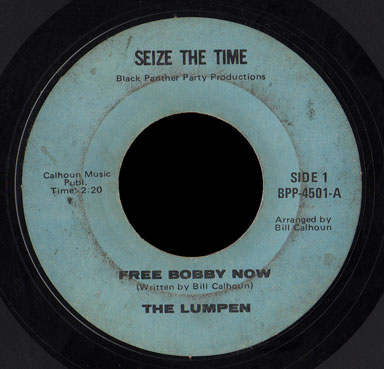

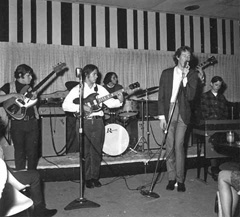
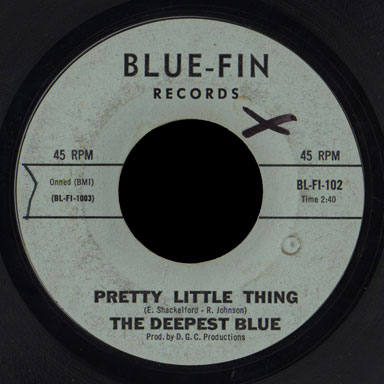

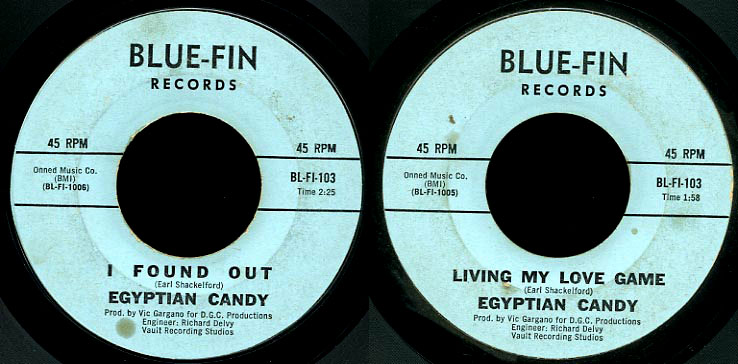
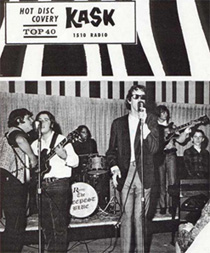
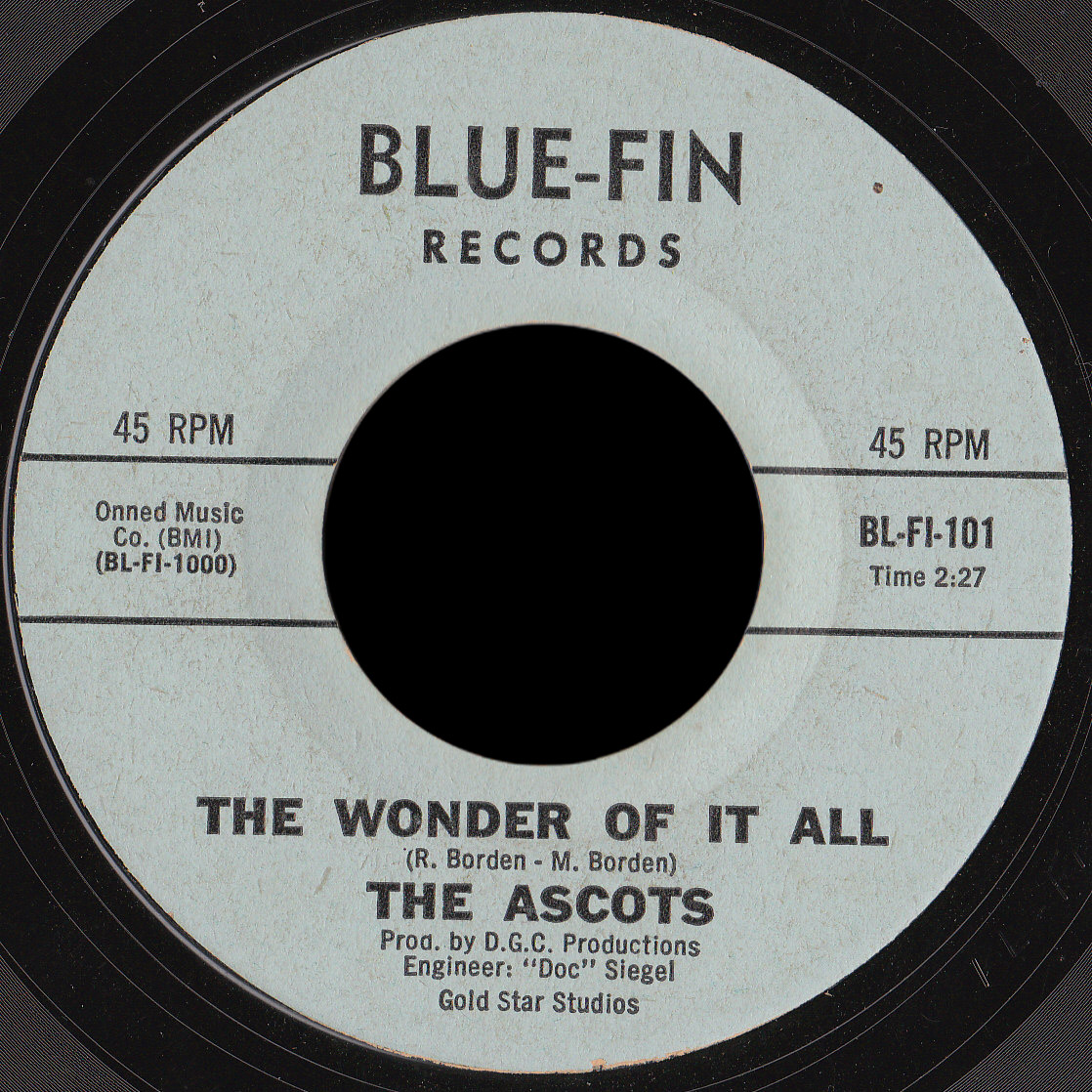
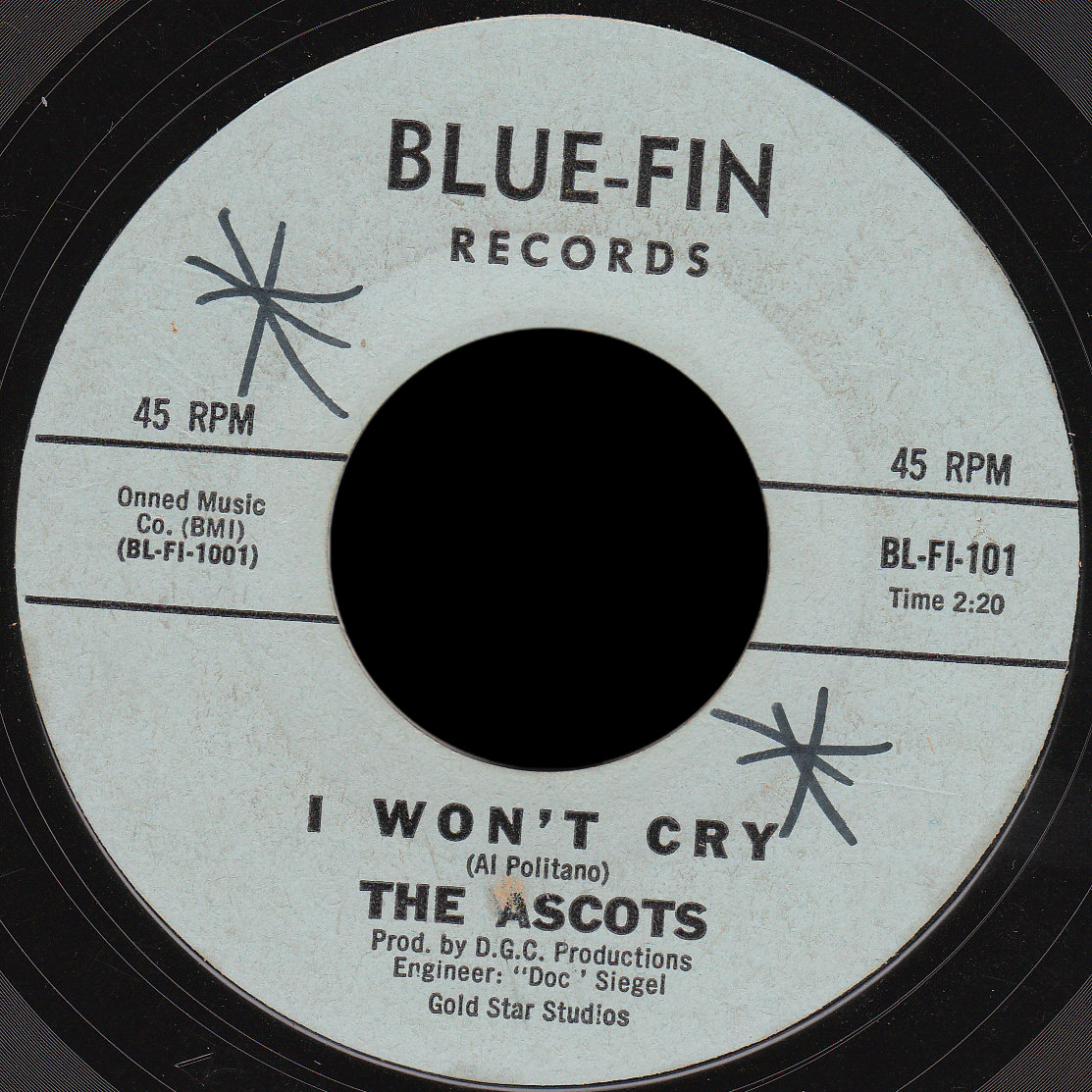
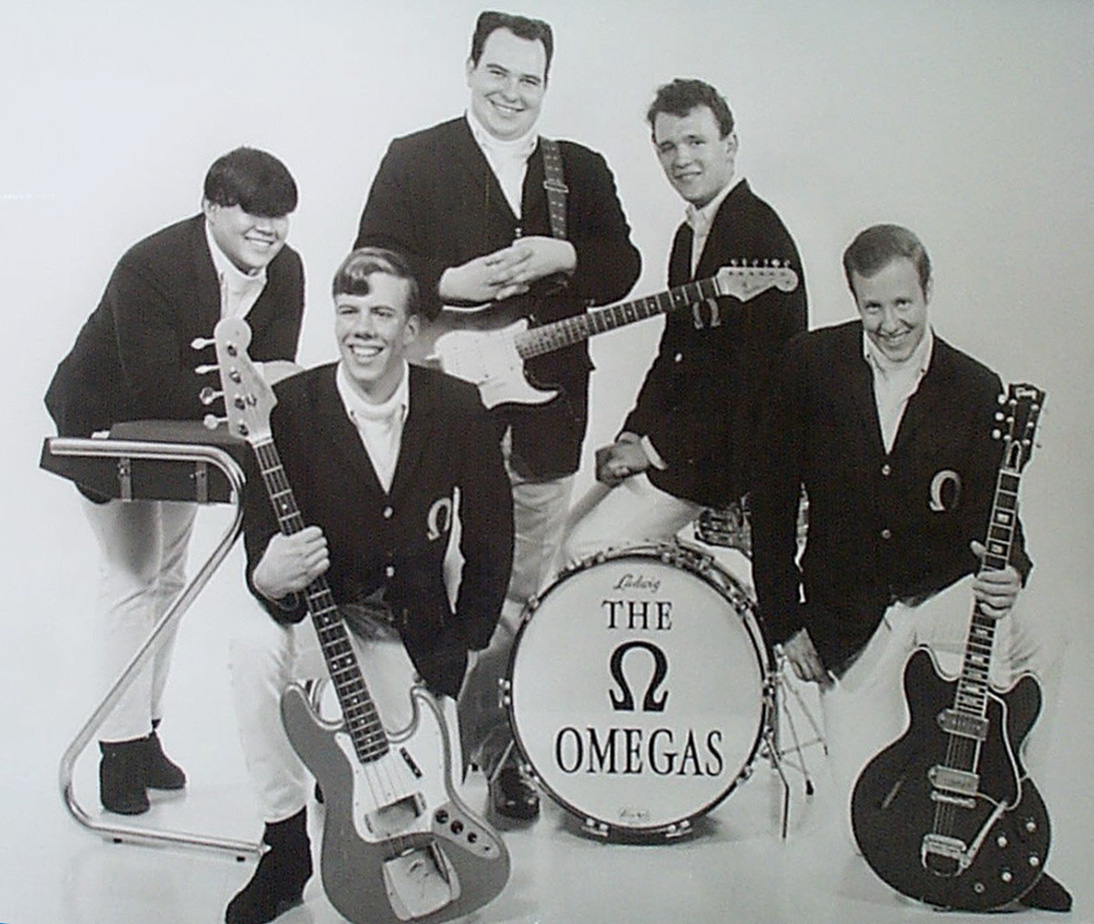
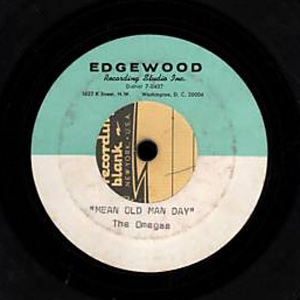
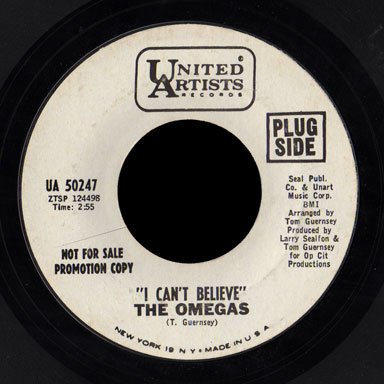
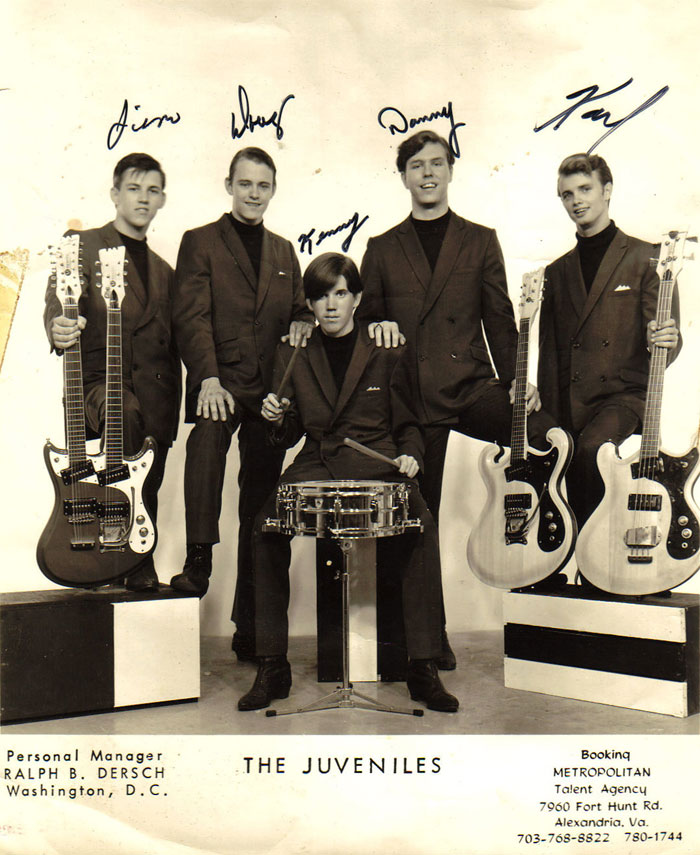
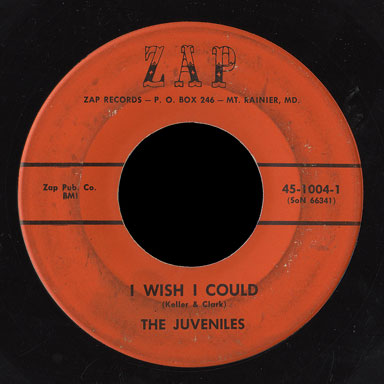
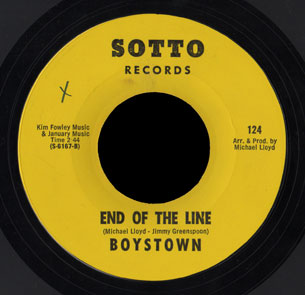
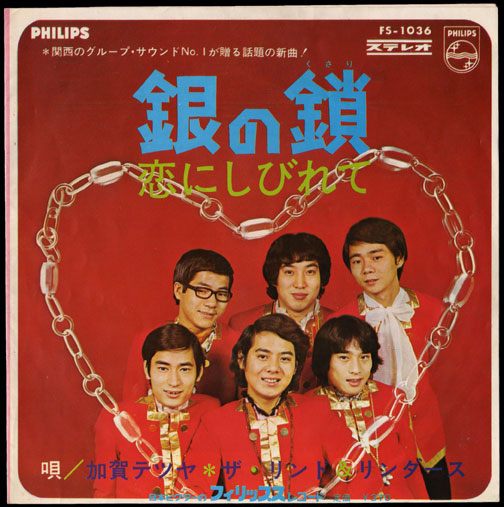
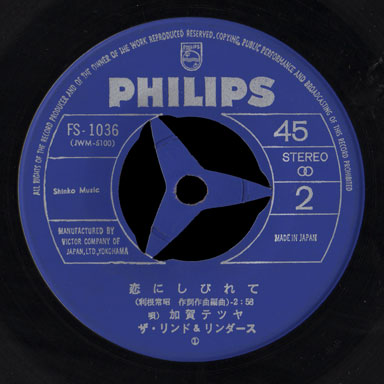
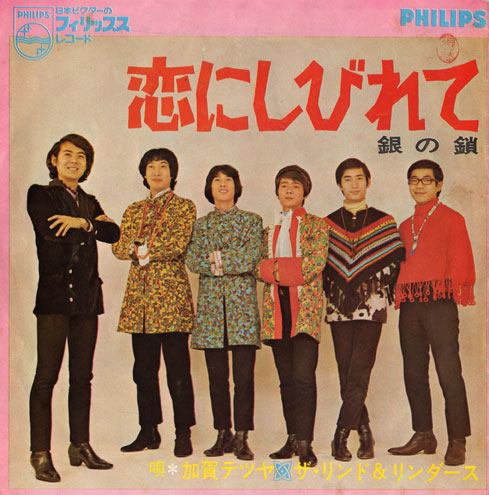
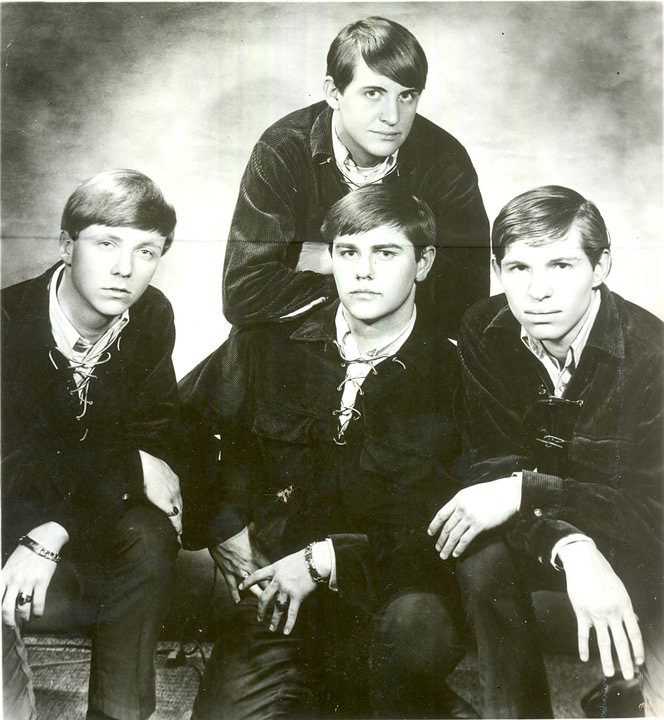

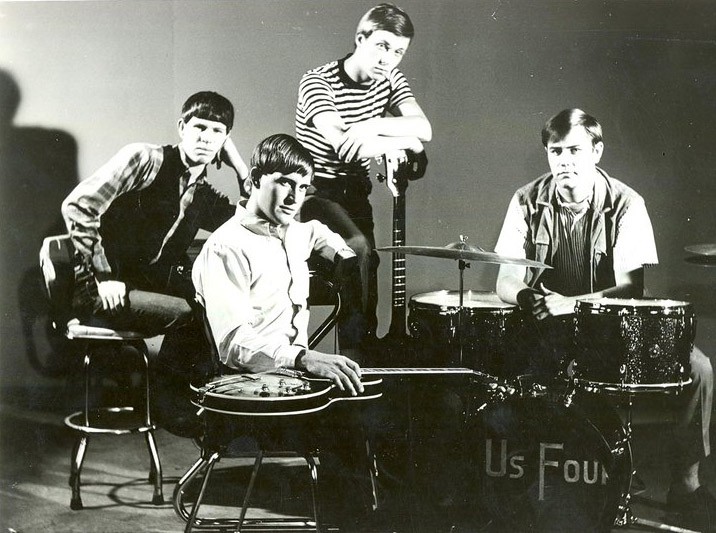
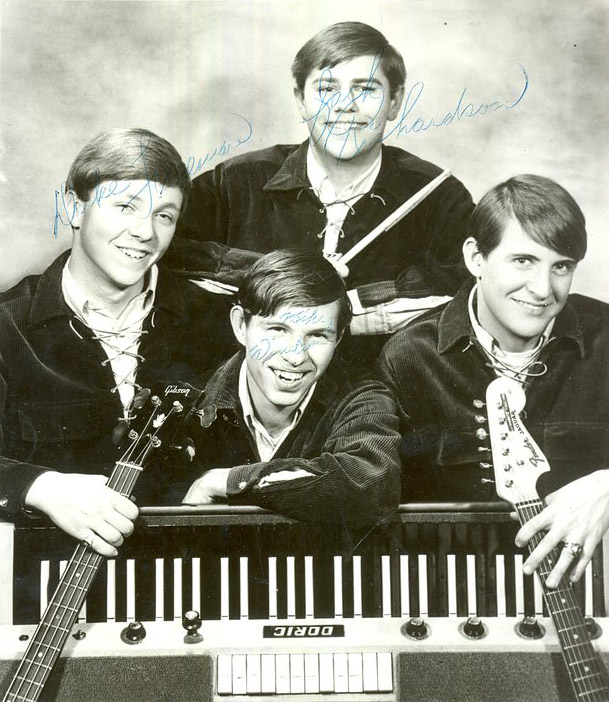
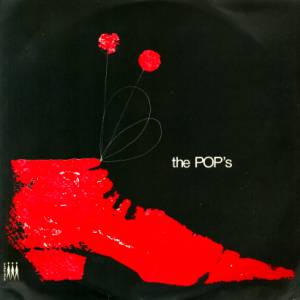
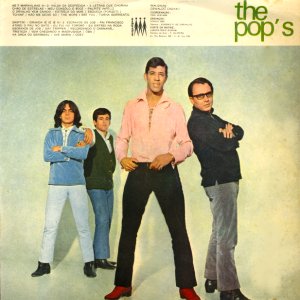
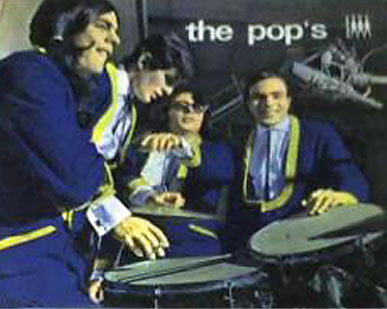
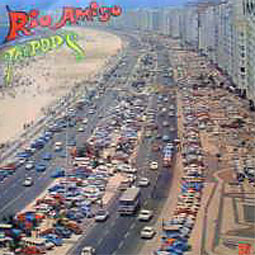 The Pop’s are one of the best and most underrated Brazilian pop-rock groups from the 1960s. Like Renato e Seus Blue Caps, The Sunshines and The Fevers, they are from our fun-in-the-sun postcard land, Rio de Janeiro; but, unlike them, they didn’t rely much on covers of current hits or their own material, being best remembered for their unlikely but very good rock versions of Carnaval evergreens and Christmas, birthday and suchlike songs, as well as having been purveyors of the samba-rock fusions backing the late, great singer-songwriter Oswaldo Nunes or on their own. But their least remembered albums are the ones on which they ventured into their own songwriting.
The Pop’s are one of the best and most underrated Brazilian pop-rock groups from the 1960s. Like Renato e Seus Blue Caps, The Sunshines and The Fevers, they are from our fun-in-the-sun postcard land, Rio de Janeiro; but, unlike them, they didn’t rely much on covers of current hits or their own material, being best remembered for their unlikely but very good rock versions of Carnaval evergreens and Christmas, birthday and suchlike songs, as well as having been purveyors of the samba-rock fusions backing the late, great singer-songwriter Oswaldo Nunes or on their own. But their least remembered albums are the ones on which they ventured into their own songwriting.